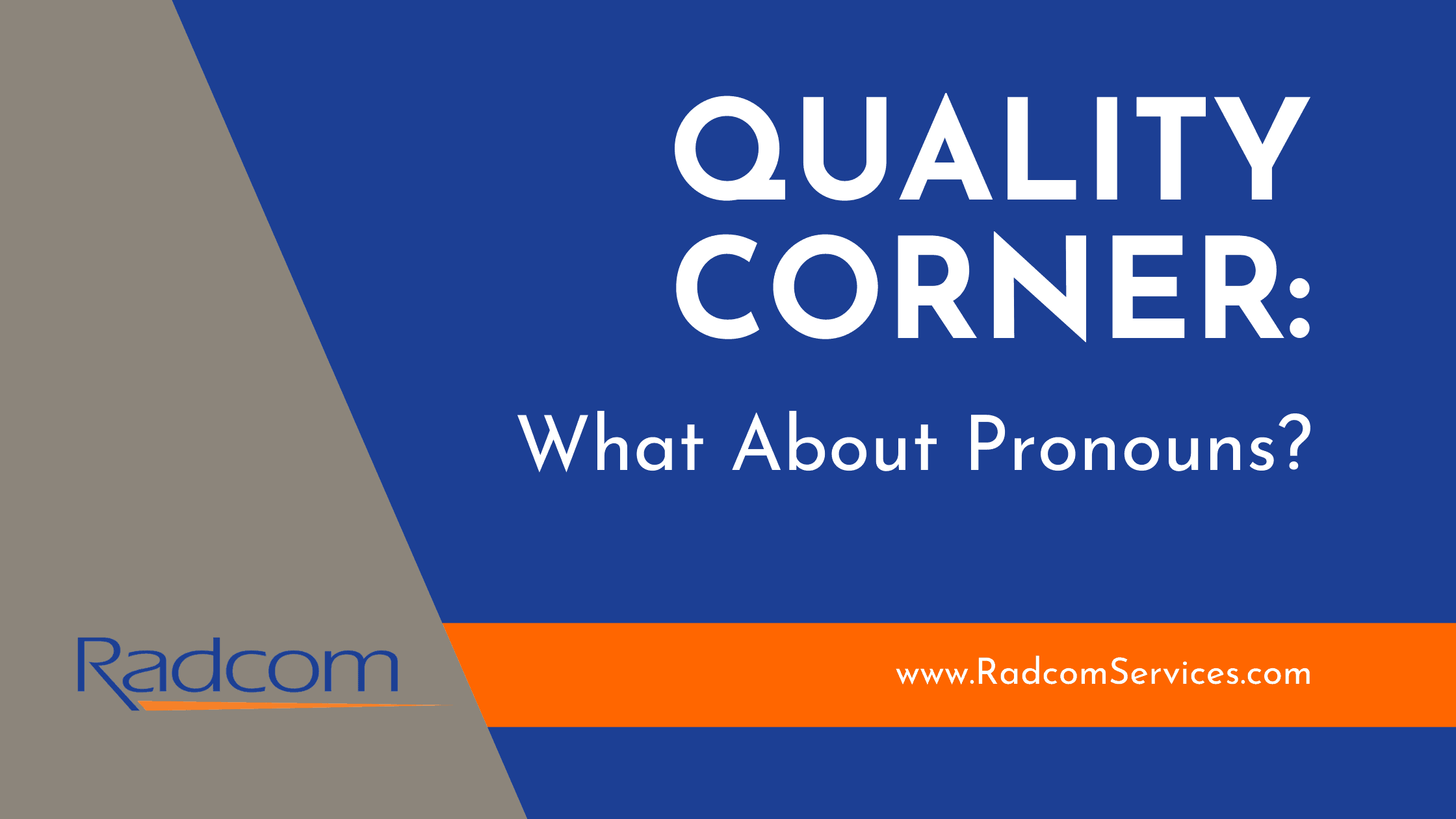
Radcom values quality. While what is considered high quality within writing and design can be variable, there are tried-and-true best practices that anyone can follow to improve their craft and ensure they produce exemplary work every time. Learn with us and grow from our lessons learned.
Pronouns are words that either refer to or take the place of a noun. Pronouns are a lovely invention that allow us to talk about Spider-Man’s Uncle Ben without having to say Uncle Ben every time we discuss Uncle Ben, because, let’s face it, we would all get rather sick of Uncle Ben if that were the case.
For that matter, pronouns allow a group to refer to the group without having to list each group member’s name every time, which makes Radcom pleased as punch, since there were 30-some odd names in the company email list. Thirty names make for a long list to use repeatedly, so a nice two-lettered “we” is the way to go.
However, with great power comes great responsibility. To use a pronoun, you must first ensure you follow all the rules:
Use the pronoun that agrees in gender, number, and person (first, second, or third) with the noun to which it refers.
This gets a little dicey. Talk of gender can be a bit of a minefield and the old “gender-neutral,” third-person-singular standby, “he/she” and “his/her,” is now insufficient, as well as cumbersome. I’m a personal fan of “thon,” a gender-neutral pronoun meaning “that one,” which is sadly defunct. Instead, use “they” interchangeably as both singular and plural for third-person use. It’s the modern, accepted method. If the gender of a noun is known, or a preferred pronoun specified, use that.
Clearly refer to one specific noun.
There is no room for ambiguity in grammar (except when there is). Generally, the noun that was last used is assumed to be the noun that the pronoun replaces, also known as the referent of a pronoun. However, things get complicated when two nouns are used in close proximity to that pronoun that are also the same in gender, number, and person. For example:
INCORRECT: Before Uncle Ben dropped Peter off, he gave him a good talking-to.
Which noun is the “he” referring to and is it the same noun as the “him” used only two words later? Unless you are a big Spiderman fan, chances are that you are pretty stumped. This is what we call a grammar no-no.
CORRECT: Before he dropped Peter off, Uncle Ben gave his nephew a good talking-to.
Now, it’s your turn.
For homework, analyze all the pronouns in the next example for yourself (answers at the end). Here is a (slightly edited for grammaticality) complex line from the song “When Midnight Sighs” by P.M. Dawn. What are the referent nouns to which each pronoun refers and is there any ambiguity?
I’m betting on an if, and if that if might have a chance to survive, it runs into twelve different ways of existing, each with the capacity to change its mind.

ANSWERS:
I: the unnamed speaker. The only ambiguity would be if the speaker has an identical twin or multiple personalities.
It: the if (that might have a chance to survive). There is ambiguity, as the noun “chance” is actually closer to the pronoun than “if” is, though the meaning of the sentence remains the same regardless of whether the pronoun refers to “if” or “chance.”
Each (yes, it’s a pronoun): ways (of existing). This one is pretty clear. Argue with me if you wish. I’m open to it.
Its: each and, therefore, ways (of existing). Again, there is ambiguity here, since “capacity” is closer to this possessive pronoun than “each.” However, if “its” meant “capacity’s,” the sentence wouldn’t really make any sense, so “each” becomes a bit of a clear winner.

